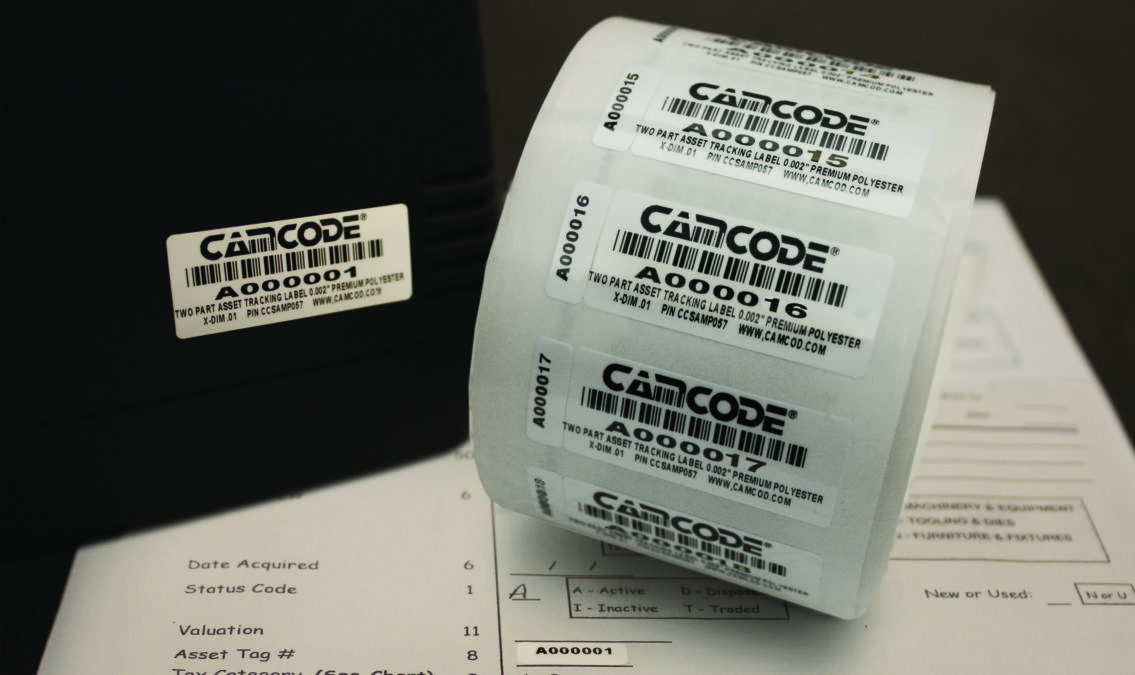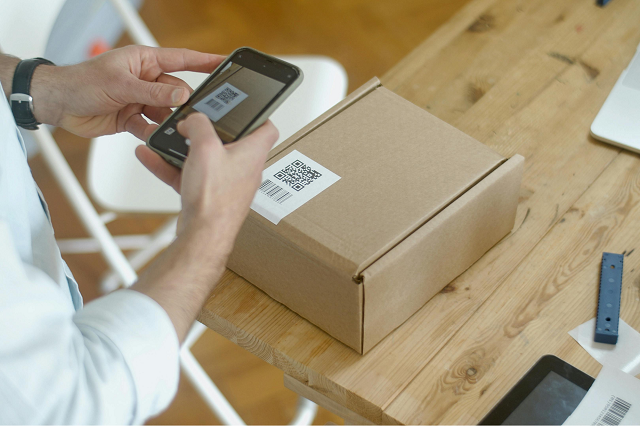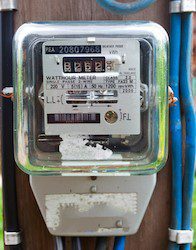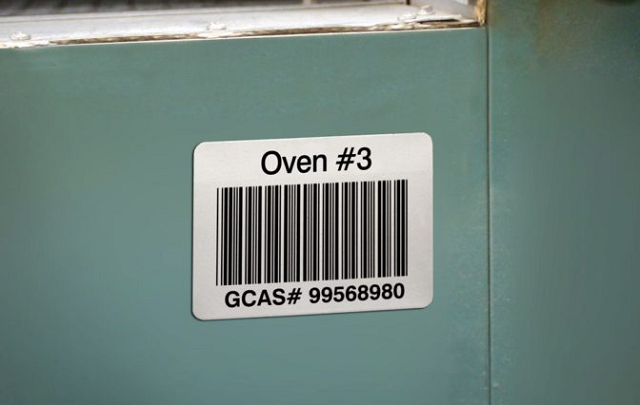What is Property ID (Property Identification)?


Organizations rely on heavy machinery, equipment, and electronics to keep business running smoothly. However, the amount of assets within your control becomes less manageable as the company grows, requiring you to set up a system for asset management.
Many organizations rely on property identification, or property ID, to identify, track, and maintain assets at scale, offering greater transparency, accountability, and security. However, implementing this system can feel daunting without the right materials or strategies.
In this guide, we’ll explain how property ID works, share the types available to organizations, and offer best practices for implementing property ID in your organization.

Photo by Kampus Production from Pexels
A property ID is a unique identifier assigned to physical assets for property identification. Property identification involves labeling inventory and company assets with property ID tags or labels. The goal is to prevent theft and streamline processes through better tracking and transparency.
Every organization uses property IDs differently, but they share several core functions, including:
Property ID labels come in various forms, including barcodes, RFIDs, or serial numbers. Organizations usually attach these tags to the assets with adhesives, physical fasteners like screws, or by engraving the ID to the item.
Several types of property identification tags and ID labels are available today, each serving a specific need. Not only that, but the use case also dictates your label materials and attachment methods. For example, you need high-temperature labels if your environment includes possible exposure to extreme temperatures.
Property ID tags and labels generally fall into one of four categories.
Asset tags and labels assist with asset identification, control, and tracking. These property ID tags and labels simplify the process of controlling and tracking valuable assets throughout their lifecycle. Asset tagging and tracking solutions include:

Utility asset labels make it possible for utility companies to:
Utility asset labels include pole tags, rigid Metalphoto® labels, foil Metalphoto® labels, and Teflon™ coated Metalphoto® barcode labels. Highly durable Metalphoto® anodized aluminum barcode labels have an image sealed below the surface, creating a barrier to sunlight, water, salt, dirt, chemicals, solvents, and temperatures up to 650°F.
Barcode pole tags, along with GIS mapping initiatives and automated pole maintenance programs, also streamline data collection processes for utility companies, effectively reducing downtime and maintenance costs.
Protecting against theft is one of the most essential functions of property ID tags and ID labels. Tamper-evident labels may include custom text and a barcode or serial number to easily identify and track valuable assets.
Metalphoto® foil security labels, destructible vinyl security labels, and polyester tamper-evident labels are some of the most common types of security labels and tamper-evident barcode labels.
These durable property ID tags and labels withstand even the harshest environments, including chemicals, cleaning, painting, outdoor exposure, and temperatures up to 1200°F. Durable barcode labels and asset tags for this use case include plastic and metal barcode labels, stickers, and tags, including:

Photo by Jonas Svidras from Pexels
Property ID tags have so many applications across nearly all industries. Properly tagged assets make it a cinch for organizations in different markets to reduce costs, stay compliant, and offer a better product.
Manufacturers use property ID to optimize production processes while maximizing the use of equipment and materials. These tags are essential for tracking the movement of components and equipment along assembly lines, allowing manufacturers to monitor production and identify potential bottlenecks before there’s a problem.
Manufacturers also use property ID to manage raw materials, finished goods, and more. Tagging each item with a unique ID makes tracking stock levels easier, streamlining replenishment and minimizing production delays.
Property identifiers like barcodes are very popular in the retail industry. However, they have uses aside from streamlining the checkout process, helping retailers manage inventory, prevent shrinkage, and improve the customer experience.
Property ID tags make it possible to track the movement of products from distribution centers to store shelves. Scanning these codes helps employees efficiently replenish stock and reduce out-of-stocks. Anti-theft measures, like electronic article surveillance (EAS), can also tag high-value items with unique identifiers that deter theft.
Healthcare providers rely on property ID to manage medical equipment and provide better patient experiences. It isn’t an exaggeration to say property ID can be a life-or-death situation in this industry.
Property ID tags are used to track the location and usage history of medical equipment, ensuring these essential devices are readily available when and where they’re needed. Medical teams also use property ID labels to track expiration dates and lot numbers, helping them maintain accurate inventories, prevent medication errors, and comply with FDA requirements.

Implementing a property ID and tracking system ensures your valuable inventory, assets, and tools are accounted for and tracked efficiently. But that’s just the start. There are so many benefits of using property ID tags and ID labels, including:
Property ID tags and labels are incredibly beneficial, but organizations need a strategy before setting up this system. Follow these best practices to implement an efficient property ID system in your organization.

Photo by Scott Graham from Unsplash
How do you envision the property ID tagging, tracking, and maintenance process working? Map everything out before you purchase software or tags. This way, everything you buy supports your processes instead of forcing your organization to work within the confines of an incompatible system.
Create standard operating procedures (SOPs) for the entire process. Outline guidelines for asset registration, labeling standards, asset movement, disposal procedures, and audits. Everyone in your organization should have access to these documents, ideally within their maintenance or workflow software, to ensure implementation.
All processes change over time, so update these policies as needed. Also, regularly review your procedures to meet organizational needs, technology updates, and regulatory requirements.
There are so many tags and labels to choose from. Which options are best for your organization?
Consider industry regulations, your use case, and your work environment. You may need to select tags or labels for specific use cases, like barcode labels or tamper-evident tags. Durability requirements and budget constraints also matter.
Choosing the cheapest option is tempting, but lower-quality property ID tags require more frequent replacements. This comes at an additional cost and also puts you at risk of property loss, inconsistent data, and regulatory fines and penalties. Prevent future headaches by starting with high-quality tags and labels from providers like Camcode.
You need asset management software to gather and manage data scanned from labels and tags. Choosing your asset management software before selecting property ID tags and labels is best. This way, you choose labels designed to fit with the best software for the job and minimize the risk of reorders.
As always, ensure the asset management software is compatible with your current processes and other software for the smooth implementation and migration.

Photo by Nelson Ndongala from Unsplash
Some industries regulate the materials, size, font, and content of property IDs. For example, medical devices must follow FDA requirements, aviation assets follow FAA rules, and OSHA regulates all workplace safety-related assets.
Being out of compliance can have a tremendous impact on your business, so understand industry regulations before you decide on labeling processes or order property ID tags.
Training your team on this new system before it rolls out is the best way to ensure implementation fidelity. Provide comprehensive training to employees on the importance of Property ID, how to apply tags or labels correctly, and how to use asset management software.
When they understand the “why” behind the new processes, they’re much more likely to follow proper procedures, keeping your property ID data as accurate and up-to-date as possible.

Effectively managing business assets is a cornerstone of organizational success. With property ID, organizations can unlock benefits ranging from better security and compliance to cost savings and operational efficiency.
As helpful as property ID is, it’s still important to take a strategic approach to implementing it in your business. This guide’s best practices are a good starting point for helping you mitigate risks, improve asset management practices, and drive operational excellence.
Quality matters at every turn, and that’s why organizations rely on Camcode’s expertise and proprietary manufacturing processes. Rely on our expert team to choose the most durable property ID labels and tags for your use case. Get a quote from Camcode now to leverage the benefits of efficient property tracking.
Property IDs assign a unique identifier to each asset that you can use to track and trace its movements. In the event of theft or loss, organizations use this information to collaborate with law enforcement agencies, monitor online marketplaces, and identify stolen assets through serial numbers or barcode scans. Also, tamper-evident property ID tag features can help detect unauthorized removal or tampering.
Implement robust security measures, such as encryption protocols, access controls, and data encryption, to keep your data secure. Follow industry best practices and regulatory requirements for handling sensitive information, such as personally identifiable information (PII) or proprietary data.
Regular security audits, employee training, and compliance with data protection regulations, such as GDPR or HIPAA, are essential to safeguarding data integrity and confidentiality.
Yes, property ID systems integrate with existing enterprise resource planning (ERP) systems to streamline asset management processes and enhance data visibility. This integration synchronizes asset information, automates inventory updates, and generates comprehensive reports for better decision-making.
ERP integrations also enable seamless data exchange, aligning all business functions across your organization.
.
Our sales engineers are experts in automatic asset tracking, tagging and identification,a nd can answer all your questions. Get in touch now.
Lets Talk ›Enter your information and get a free checklist of the top questions to answer and tips to plan a successful asset tagging project for any asset management or tracking system implementation.